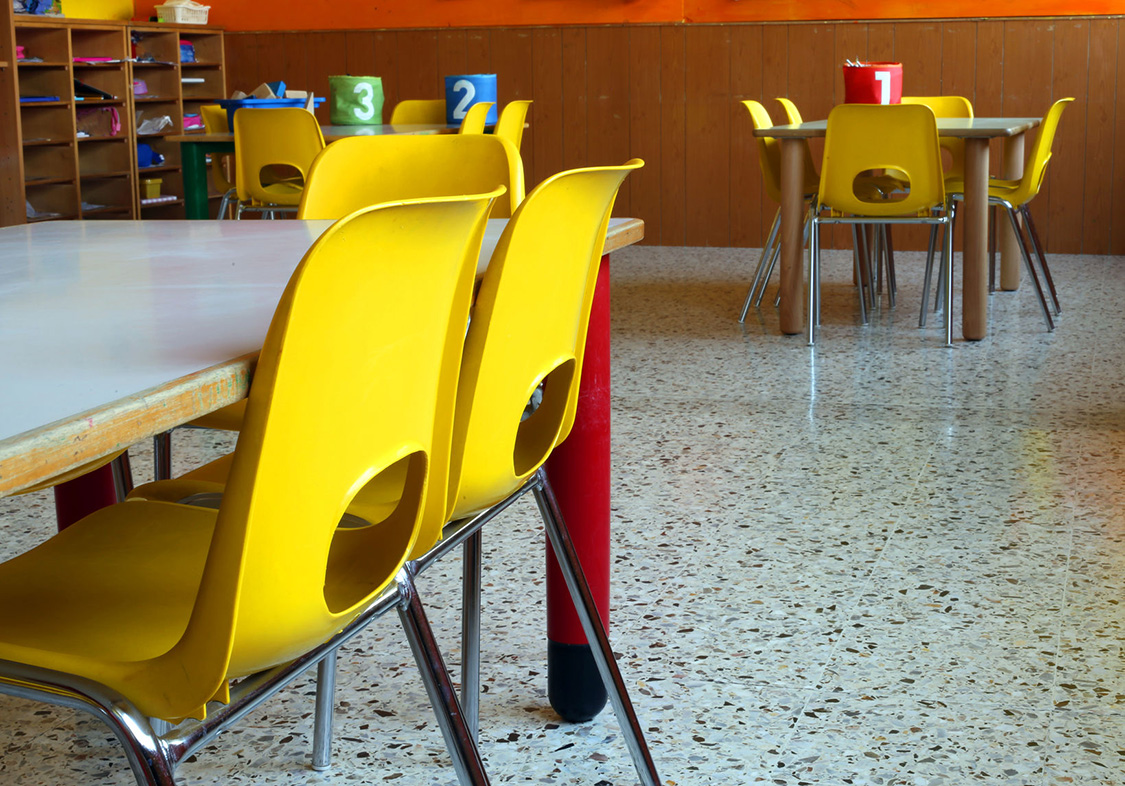
Have you ever stopped to look at your children’s area or classrooms from a child’s perspective? Places where children spend meaningful time need to feel safe and comfortable. But adults don’t see and feel the same things elementary-aged children see and feel when entering a room, so they often inadvertently create spaces that, to children, may be crowded or confusing.
Evaluating the physical space in your children’s area or classrooms from a child’s viewpoint will help you identify ways that space could be creating stress and frustration—even encouraging aggressive behavior in some children.
Seeing the space through a child’s eyes
To help you and your staff evaluate the physical space of your children’s area and its impact on the children using it, try to imagine yourself as a seven-year-old again. At the beginning of the school year, your arms are too short to reach the crayons in the middle of the table, and your feet still swing from the church pew. You may have to climb up onto the adult-sized chair.
But a few months later, you’ve hit a growth spurt and you kick people by accident when you try to swing your legs from the pew. Your arms are longer, you can see over the edge of the table, and your body might feel unfamiliar. Try putting yourself back into that growing body and remember—kids need space because they haven’t mastered their bodies yet!
Now enter your children’s area and try to imagine how a seven-year-old would navigate through it. Can the child reach the crayons? Are the chairs and tables too close together? Don’t assume that because an adult wouldn’t trip over something that a child can avoid it, too.
Understand the stressors
Children are bringing external stress with them into the classroom space, and being aware of these stressors can help you understand the importance of making sure your space is comfortable, pleasant, and safe.
Aside from the discomfort and strangeness of a rapidly changing body, many children bring stress from divorce and other life events affecting their home, and all the big emotions—anger, sadness, and confusion—that come along with that. Because their minds are preoccupied with what is going on at home, stressed-out children may not be cognizant of the space around them. They might not see a table until they bump into it, or they may miss the chair when sitting down and end up on the floor.
Indications that your space may not feel safe or comfortable for stressed kids
What you see as a child misbehaving may in fact be that child responding to a physical space that isn’t conducive to his or her needs. Do you hear things like, “Teacher, he’s looking at me!” or “Teacher, he’s touching me!” Some stressed kids will need a lot of personal space around them. Or, do you notice children pushing a shelf or a table out of their way? Small spaces can exacerbate the anger many children are already feeling. Others may act depressed because small spaces make them feel confined. Cramped spaces can make some children hyper or nervous.
When you couple an angry child with all the others who are experiencing stress from either a chaotic home life or other external situations, add in the emotions floating around the room, and you can understand why considering your children’s area space is so important!
Suggested changes
- Make walking pathways wide. Some kids are just clumsy. They stick out their feet, or they fall out of their chairs. If you have a cramped area, these kids’ actions hurt or inconvenience other students.
- What’s the view like? Children who have experienced physical abuse themselves or witnessed spousal abuse will want to be able to see everything going on in the room and what everyone is doing. They want to make sure no one sneaks up on them. If you’re aware of children in your class who’ve been abused, consider creating a few spaces where their backs can be to the wall, or allow them to sit at the back of the room, where they can readily see all the activities going on in your area.
- Make at least two ways to get into and out of an area, because abused kids will always be looking for a way to escape.
- Look for ways you can rearrange furniture to create a more open floor plan. Sometimes creating a more inviting space is as easy as moving a few shelves!
- Ask yourself if the space is simply too small and look for another space, if possible.
- Pray about your room and ask the Lord to allow you to see your space through the eyes of a hurting child.
Your goal is to have your church reach children with the love of Jesus. To do that, you’ll want those children to feel comfortable and welcomed—not crammed into an area that wasn’t designed to meet their needs. When was the last time you looked at your children’s space like this? Take some time to do it this week!

